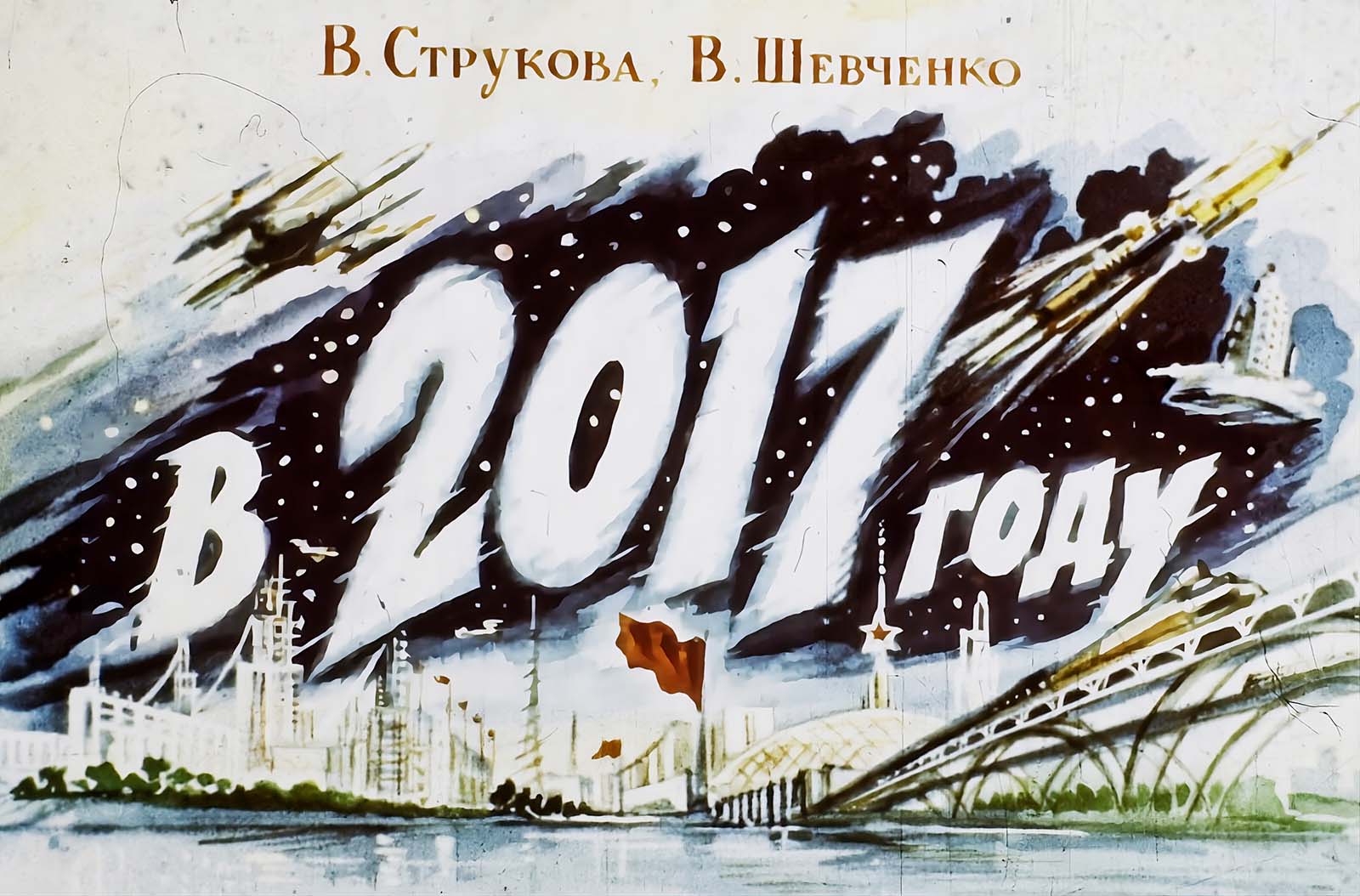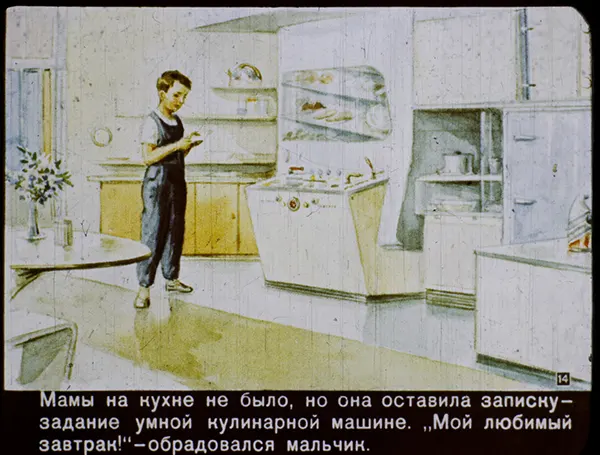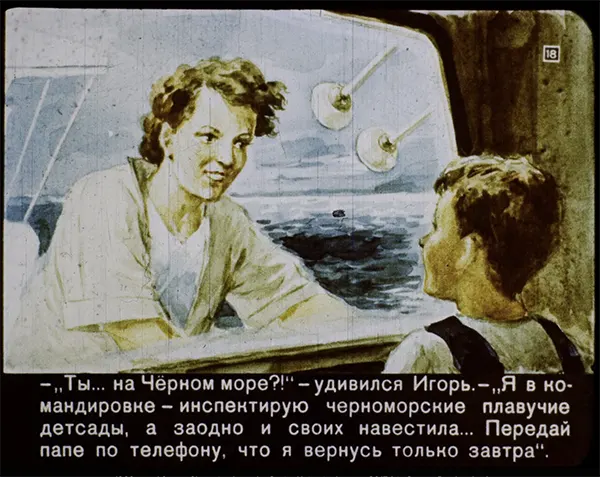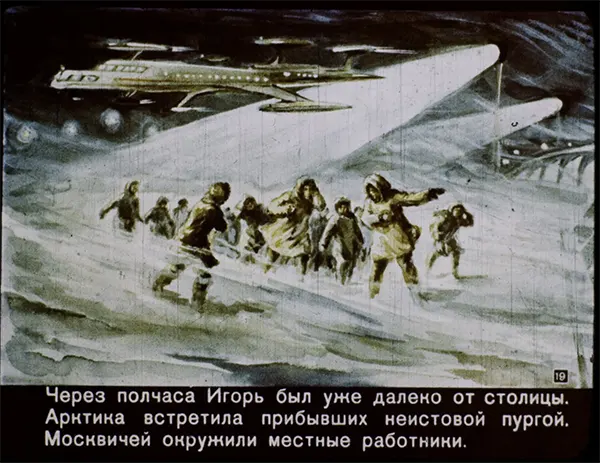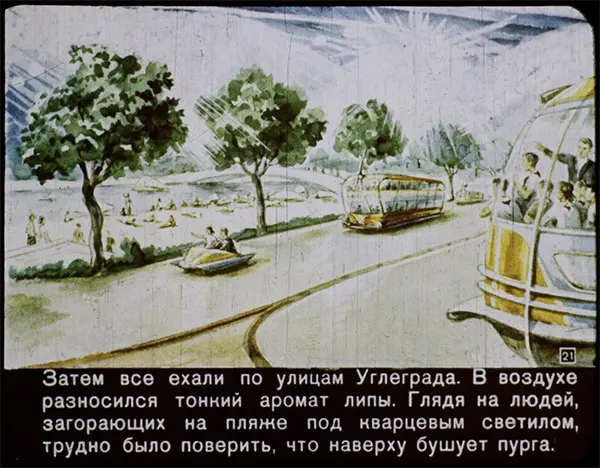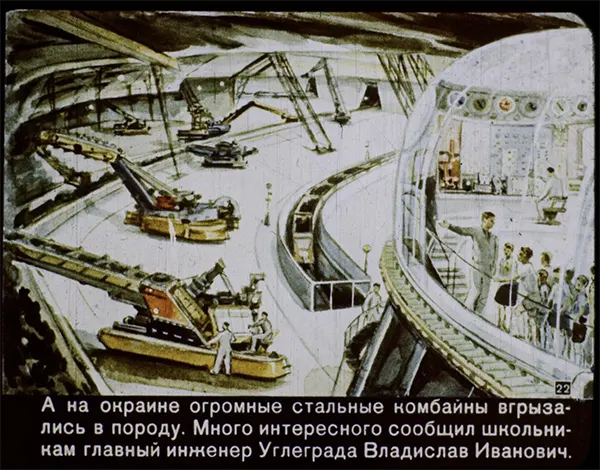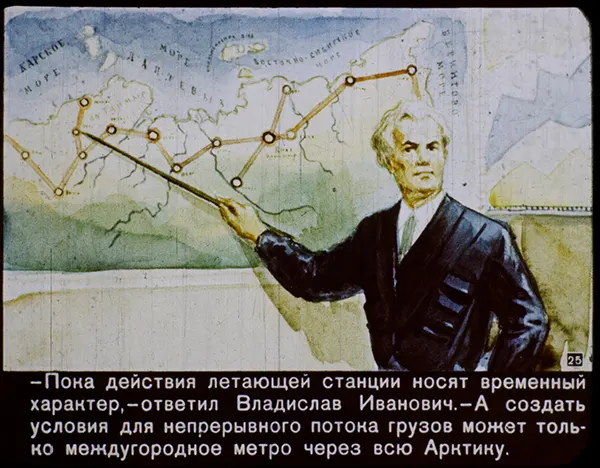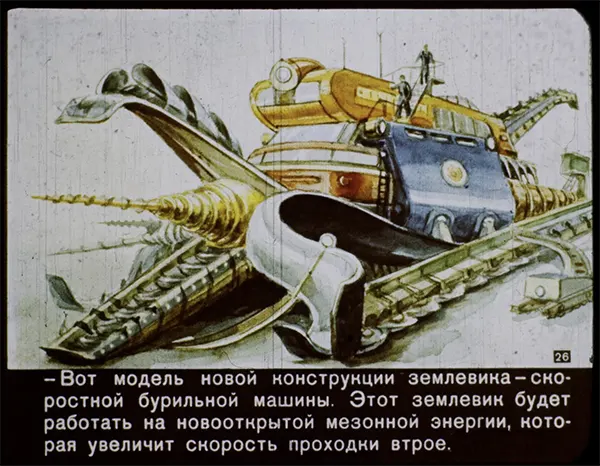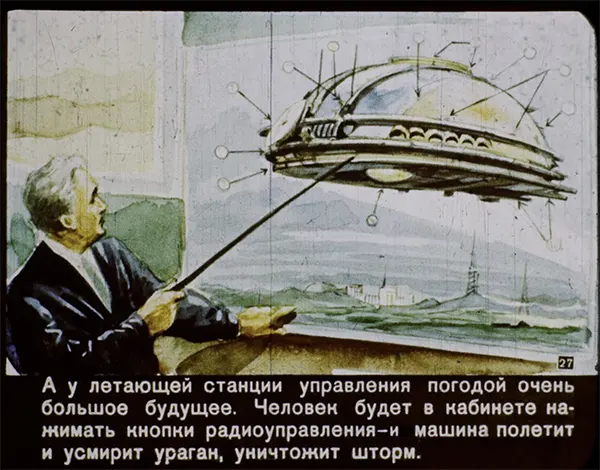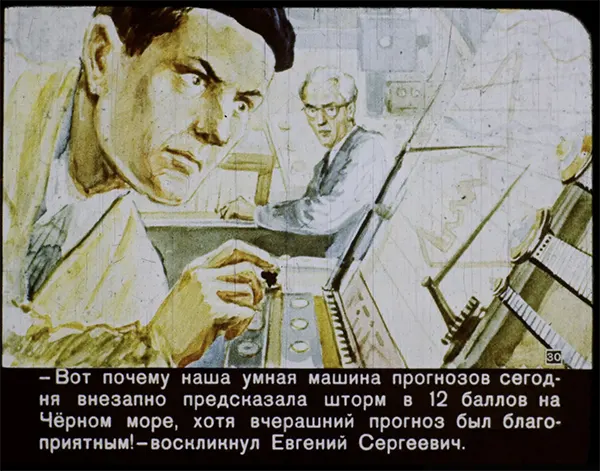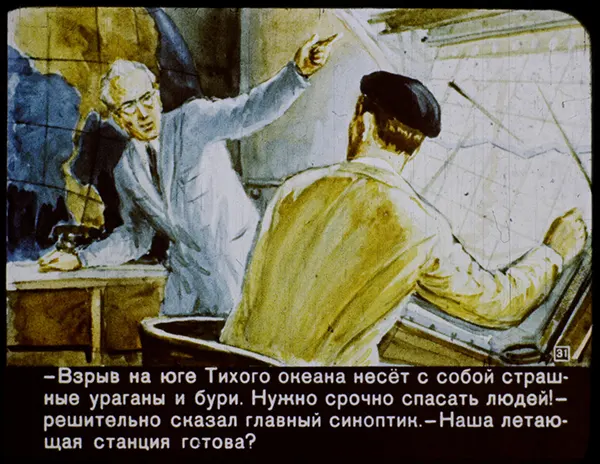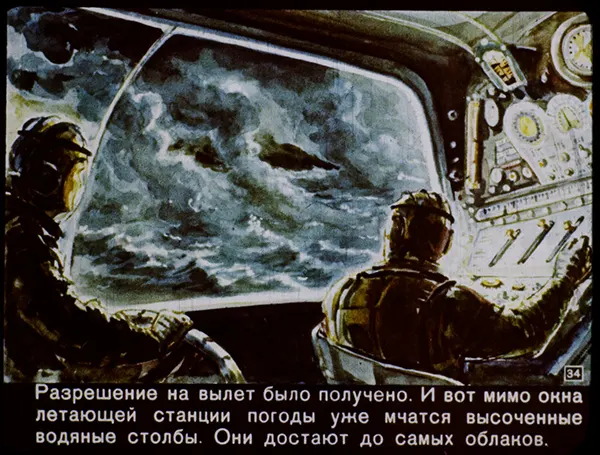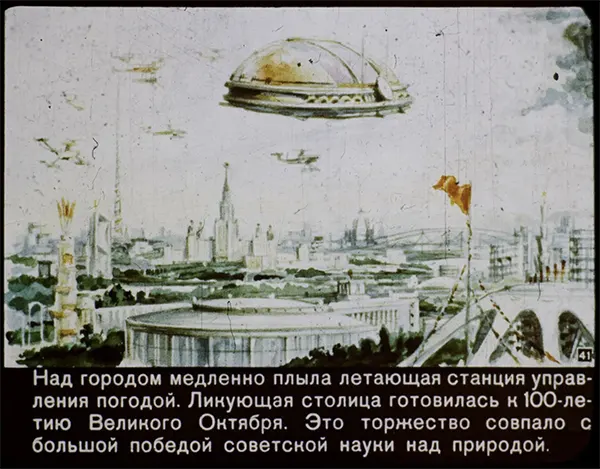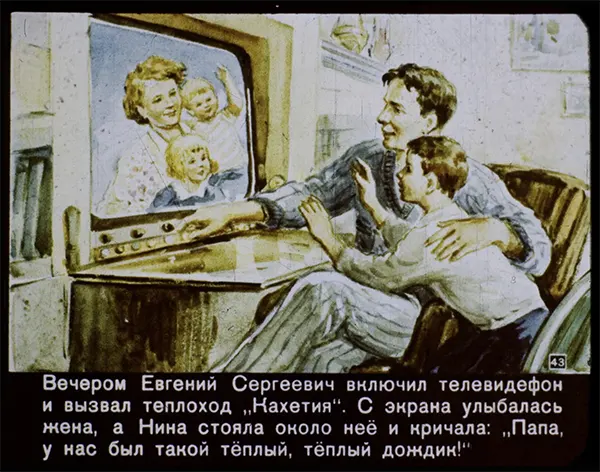What were the expectations of the Soviet Union’s citizens regarding life in the year 2017? In 1960, the Soviet film studio “Diafilm” presented a filmstrip titled “In the Year 2017,” crafted by V. Strukova and V. Shevchenko. This cinematic creation envisioned a portrayal of the U.S.S.R. 57 years into the future. Comprising 45 panels, this filmstrip is a blend of spectacular fantasy and a reflection of its era. In the Strukova and Shevchenko rendition of 2017, it’s the Western “imperialists” who have self-destructed, while the Soviet Union has achieved remarkable scientific prowess. In this vision, “atomic trains” gracefully traverse the Bering Strait, and airborne power stations exert control over global weather patterns. The narrative even delves into the Soviet Union’s 1960s fascination with “meson energy,” a theoretical form of atomic energy later dismissed as unattainable. “In the Year 2017” not only portrays a future world shaped by Soviet scientific prowess but also weaves the story of a young boy and his family. We meet a young boy named Igor in the strip, whose father works in weather control. Weather control, of course, was something that both the United States and the Soviet Union obsessed over during the Cold War as a potential weapon. Through the slides we see Igor inserting an “instruction note” into the computerized kitchen, which makes his breakfast. After the machine reads the instructions, “automatic scoopers measure out what’s needed, and special knives quickly chop vegetables.”
The family has been brought back together, albeit virtually, through videophone communication at this moment. In the auspicious year of 2017, the catastrophic weather consequences of the imperialist weapon have been successfully managed. Nevertheless, it is reasonable to assume that remnants of the capitalist movement may still persist, signifying the importance of maintaining vigilance. (Photo credit: Diafilm / V. Strukova and V. Shevchenko via Moscow Times). Notify me of new posts by email.
Δ Subscribe
